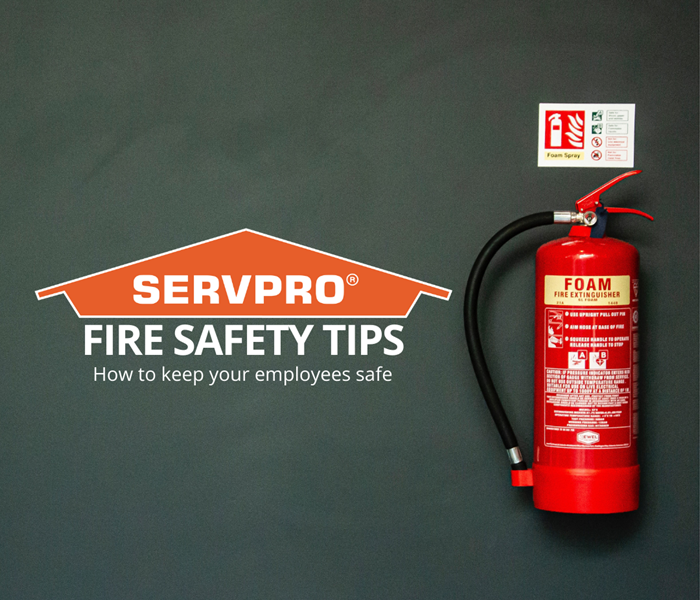How to keep your employees safe in the event of a fire!
9/28/2021 (Permalink)
 A portable fire extinguisher can save lives and property by putting out a small fire or containing it until help arrives.
A portable fire extinguisher can save lives and property by putting out a small fire or containing it until help arrives.
Your employees are not just members of your team, but also important assets to your company! These suggestions can help them avoid injury in the event of a fire:
- Conduct a fire drill at least once a year to ensure that your personnel are familiar with your workplace's fire safety procedures.
- Have a safety officer on the job. Assign someone to be the office's fire prevention officer. Composing escape routes and meeting points for employees, as well as keeping all of your safety plans, equipment, and information up to current, will be among their responsibilities.
- Sprinklers should be installed. Sprinkler systems are the most cost-efficient and effective technique to stop a fire from spreading. According to the National Fire Protection Association, fires were restricted to the room of origin 97 percent of the time when sprinklers were present.
- Make sure there's room for appliances. Allow some space behind heat-generating gadgets, such as coffee machines and computers, to allow them to cool down. Keep all of your office equipment away from flammable items such as paper or cloth. Unplug these appliances at the end of the day if at all possible, as most company fires occur after normal operation hours.
- Replace wires on a regular basis. Check power cords for fraying, broken connectors, and cracked insulation on a regular basis. These must be replaced right away. When using power strips, only use one extension cord per outlet and follow the manufacturer's specifications for maximum wattage. Avoid "octopus wiring," which occurs when multiple wires and plugs are tangled around a single outlet, as this might result in an overload.
- Plan for an evacuation. Post a fire evacuation plan in various locations throughout the workplace in larger buildings. Never use elevators as part of an evacuation strategy; instead, take the steps. In the event of an emergency, businesses with disabled employees should prepare a detailed evacuation plan for those employees who require additional support.
- Supply a first-aid kit. Employees should be familiar with the location of the first-aid kit in case of fire accidents, which should be located where fire dangers can occur most frequently, such as in the kitchen.




 24/7 Emergency Service
24/7 Emergency Service